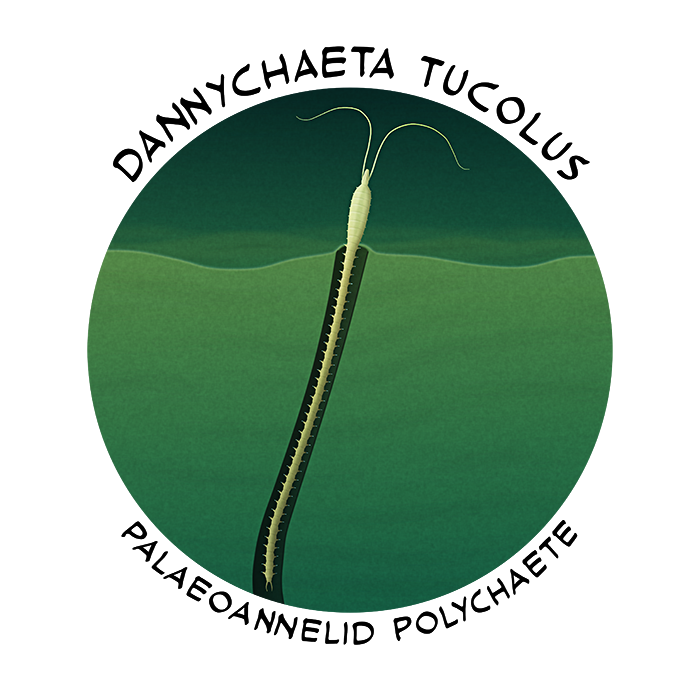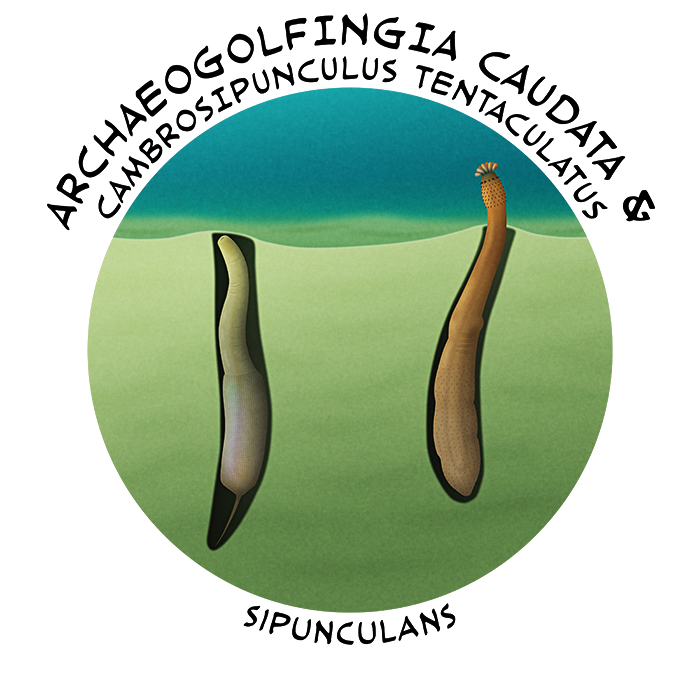Among the various stem-polychaete worms known from the Cambrian, the existence of more modern-style annelids like Pygocirrus hint that the common ancestor of modern forms might have evolved much earlier than previously thought. But this was complicated by the fact that all the known stem-polychaetes seem to have been active crawlers or swimmers, while the oldest modern lineage of polychaetes are burrowers, mostly sedentary, and sometimes tube-dwelling.
So if “crown group” forms that lived buried in the seafloor sediment must have diverged at least as far back as the early Cambrian, where were the fossils of them?
Enter Dannychaeta tucolus!

Recently discovered in the Xiazhuang fossil deposits in Yunnan, China (~514 million years ago), this polychaete had long tentacle-like palps, a pronounced head, and a stout region at the front of its body with the rest being very long and slender. The known fossil specimens are incomplete, but it may have been around 8-10cm long (~3-4″) and it was preserved inside tube-lined burrows.
It resembled modern magelonid shovelhead worms so closely that it’s been classified as a member of that group, making it the oldest crown-annelid with close living relatives – and showing that early members of the phylum must have been experimenting with a much wider range of lifestyles than previous fossil evidence suggested.

Sipunculans, or “peanut worms”, are a group of unsegmented marine worms that mostly live in burrows or crevices. They were traditionally considered to be their own phylum, but more recent molecular studies have revealed them to actually be annelids – although it’s not clear where exactly they fit into the group’s overall evolution. They might be a very ancient branch, diverging even before the early Cambrian stem-polychaetes, or they might have originated within the polychaetes, perhaps belonging somewhere closer to earthworms and leeches or fireworms.
Fossils of this group are extremely rare, making their evolutionary origins even murkier, but there are a couple of possible examples from the Cambrian.
Known from the Chinese Chengjiang fossil deposits (~518 million years ago), Archaeogolfingia caudata and Cambrosipunculus tentaculatus were very similar in appearance to modern golfingiidan sipunculans. Both were about 4cm long (1.6″), and they probably lived buried in the seafloor sediment in burrows, extending the front part of their bodies out to feed on organic detritus.
They demonstrate that the basic sipunculan body plan already existed in the early Cambrian, and so the group must have undergone some incredibly rapid anatomical changes after they first diverged from other annelids – then proceeded to change very little over the next half a billion years.
